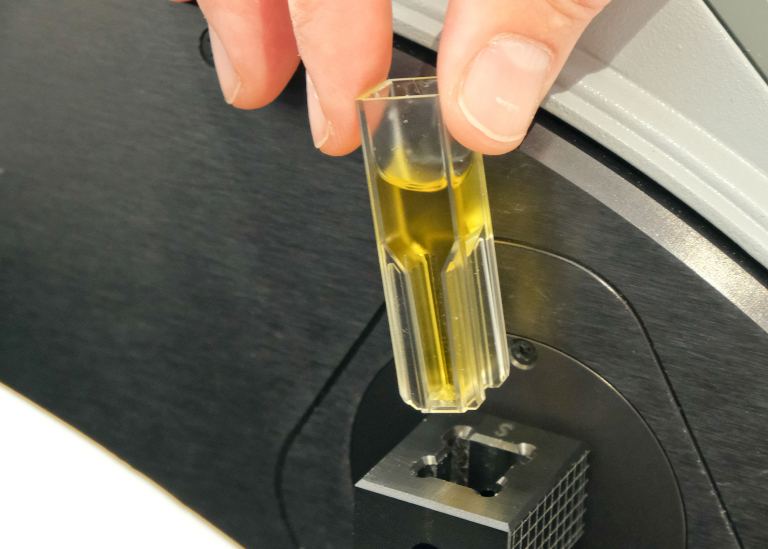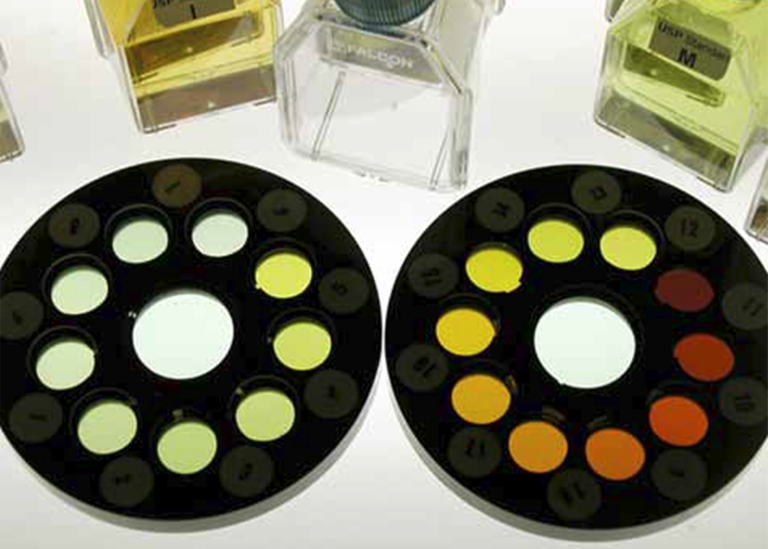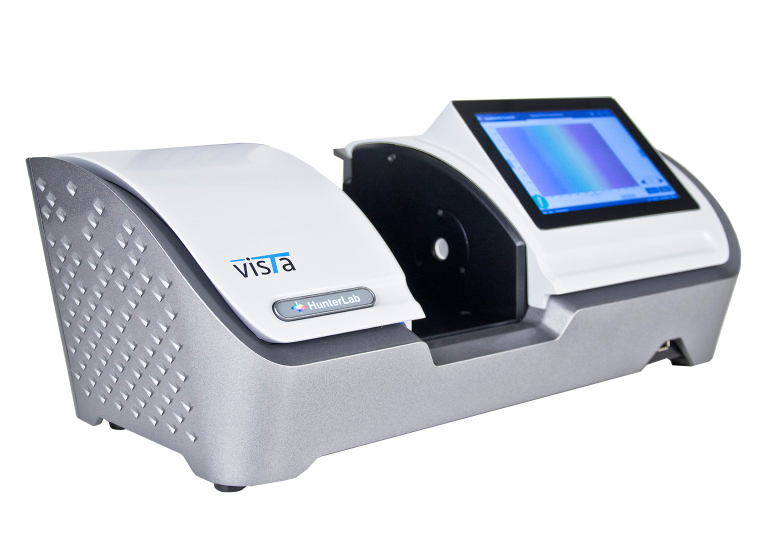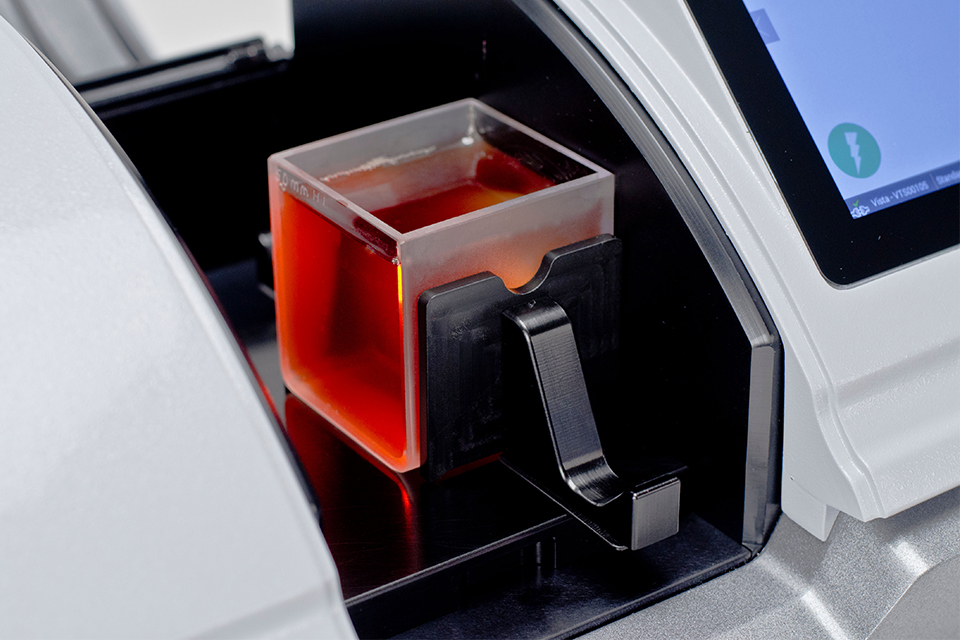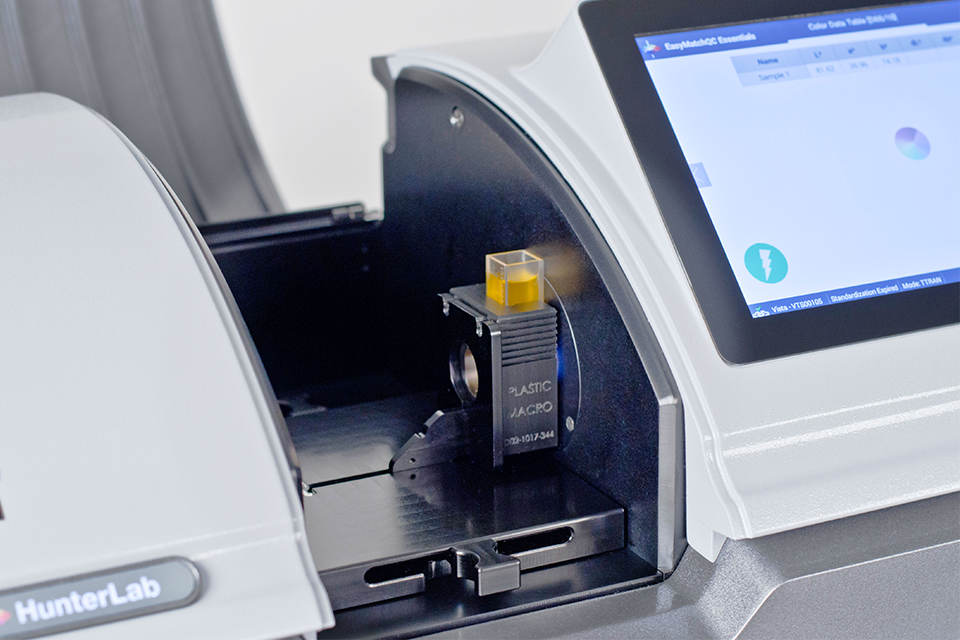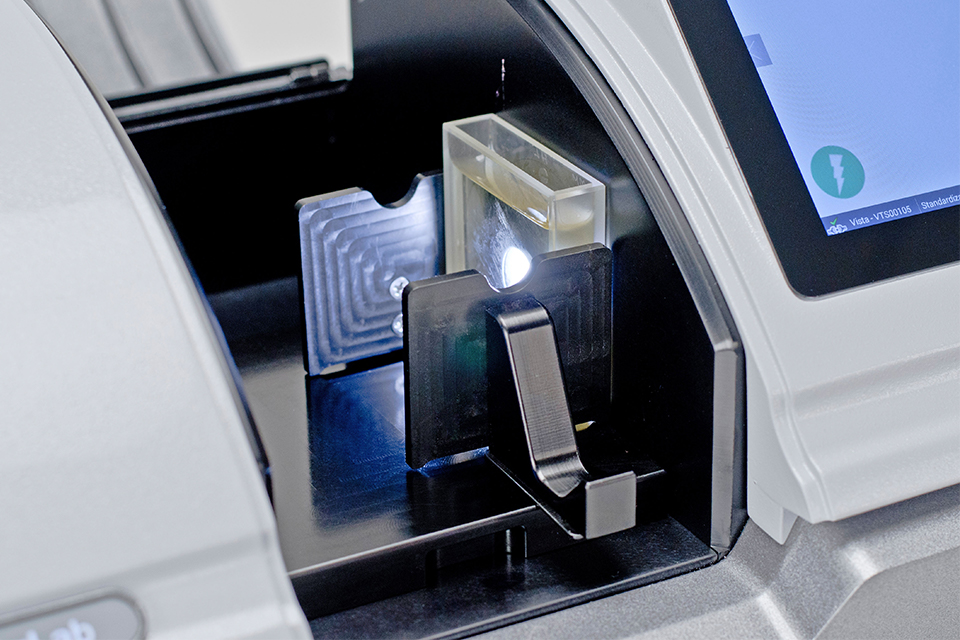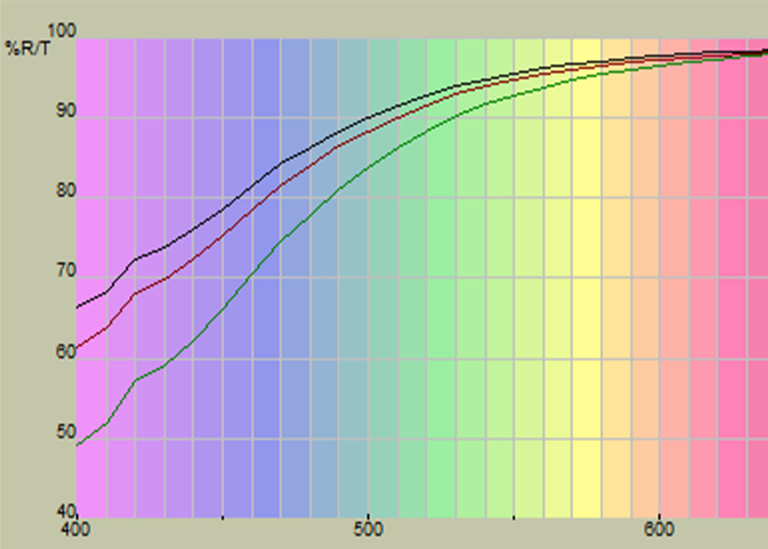
Colour measurement on light coloured or colourless liquids
APHA, Gardner & Lovibond®
Aqueous solutions and oils are almost always spontaneously visually assessed for their quality by a colour evaluation. It is therefore not surprising that colour is regularly tested as a mandatory parameter within QC.
This parameter can be quantified with different colour scales. For example, APHA, Gardner or Lovibond® are still regularly used as a measure of a typical yellow discolouration of raw materials.
Colour scales
The 3 colour scales are briefly discussed below:
APHA/Pt-Co or Hazen Colour
As early as the 19th century, contaminated water and oils were compared with specific dilutions of a platinum-cobalt (Pt-Co) solution to assess their colour quality.
In 1892, Allen Hazen defined this colour scale for the American Public Health Association (APHA). Hence, this scale is known by three different names: APHA, Pt-Co or Hazen.
The scale goes from zero for distilled water to 500 for a dark amber concentrated solution corresponding to heavily polluted wastewater. The intermediate score is represented by a dilution series of this stock solution.
The full description of this method can be found under ASTM1209. This colour scale is mainly applied in the fields of chemistry, petroleum, plastics and pharmaceuticals.

Lovibond® RYBN-scale
The Lovibond® scale is based on a set of 84 coloured slides with different optical densities of magenta (red), yellow, blue and neutral, graded from unsaturated to fully saturated. The three primary colours and the neutral filters are combined until they match the colour of the sample. The result is a set of glasses (RYBN units).
This method is described under ISO 15305. Fields of application are mainly determining the colour of oils, fats, chemicals and syrups. In many applications only the Lov-R and Lov-Y value is examined. Again, the zero value corresponds to a colourless sample.
Gardner-colour scale
This colour scale has only 18 units and was originally developed in 1920 to describe the colour of oils, varnishes, fatty acids and resin solutions. These liquids are generally moderately saturated greenish or reddish-yellow in colour in the raw form. The colour of these products usually increases with each processing step.
The light yellow Gardner colours (1 to 8) are based on a solution of potassium hexachloroplatinate, the numbers 9 to 18 on ferric chloride, cobalt chloride and hydrochloric acid. the correct formulation is described in ASTM, D1544/DIN 4630. The Gardner zero (0) standard is distilled water.
Type of measurement
Since the samples are transparent liquids, all three colour scales are measured in transmission cells or vials. Semi-solids, such as waxes or petroleum jelly, are measured in the molten state.
The right instrument
The HunterLab Vista is the ideal instrument to measure the mentioned colour scales. It is a spectrophotometer with a diffuse/0˚ geometry. Easy to use and perfect for measuring liquids and solid transparent or semi-transparent samples in transmission. With this instrument, different path lengths up to 50 mm can be viewed. The result of the measurement can be expressed in a colour scale or indices such as APHA, Gardner and Lovibond®.
Practical example
Measuring the Lovibond® colour of a yellowish solution with the HunterLab Vista.
A 10 mm cuvette was used for the measurement. In the colour data table the L* a* b* and Lovibond® values are selected. The Lovibond® Index has been calculated and is reported in the typical path length 5.25 inches = 133 mm. In this way you can easily use inexpensive standard 10 mm cuvettes, limit the sample volume used and still display the colour at the desired 133 mm path length.

Depending on the amount available and the nature of the samples, you choose a transmission cell with a certain path length. The corresponding index must then be selected in the software. For example, the APHA 10 mm index for a transmission cell with a path length of 10 mm.
Standardization of Vista
The standardization of the Vista in Total Transmittance (TTRAN) mode is performed automatically. During this calibration, a transmission cell or ID glass vial of distilled water is positioned in the transmission compartment to set 100% transmission as the zero (0) value of the scale.
Strictly according to regulations, distilled water is always used for the standardization of the device at these colour scales, regardless of whether the sample has water as the solvent or whether other solvents such as benzol or oil are used. Of course, for the standardization a transmission cell has to be used that has the same path length and is of the same material, as is also used in the sample measurement. It is good practice from time to time to convince yourself of a correct measurement by using standards and thus performing a Performance Qualification (PQ) of the instrument.
Conclusion
The application of the colour scales APHA, Gardner or Lovibond® are suitable for almost colourless liquids with a slight yellow-red or green discolouration, related to the degree of pollution or the quality of the production process.
The colour scales are defined by a physical reference material and their dilution series. The measurement performed with a spectrophotometer eliminates the human aspect in the visual method and also allows detection at a lower scale with higher accuracy and repeatability. The HunterLab Vista is easy to use and ideally suited for measuring APHA, Gardner or Lovibond® colour.
More information?
